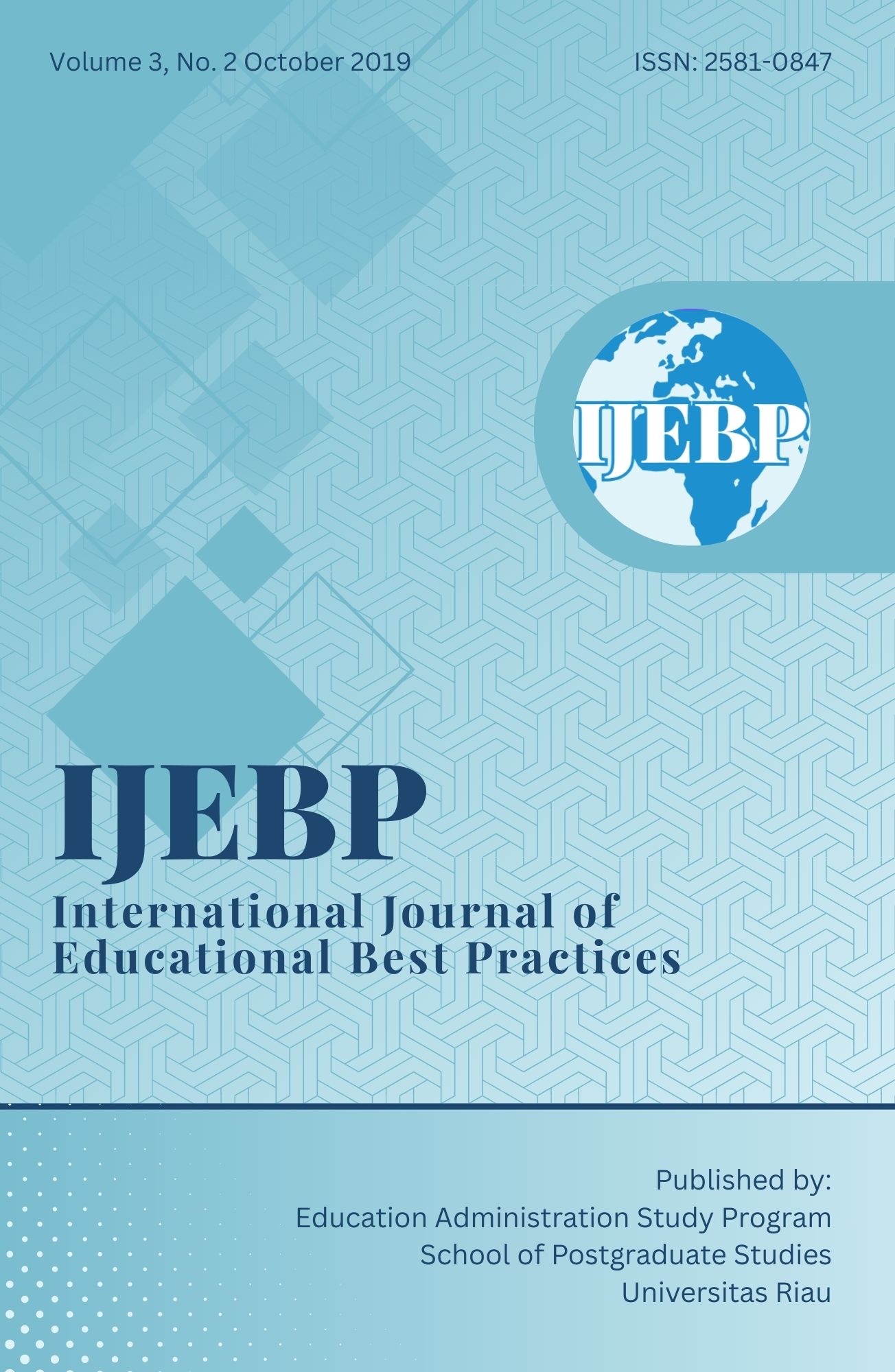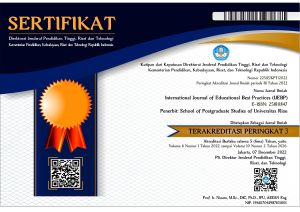THE USE OF ONLINE MEDIA AND TOPOGRAPHY MAP IN THE TOPIC OF LANDSLIDE NATURAL DISASTER, ADVANCED EARTH PHYSICS COURSE
DOI:
https://doi.org/10.31258/ijebp.3.2.1-9Keywords:
Google Earth, Landslide, Advanced Earth PhysicsAbstract
Advanced Earth Physics course is one of the courses discusses all aspects of physics that exist in natural processes occurring on the earth. One of the topics discussed was Landslide Natural Disaster. The purpose of this study is to discuss the use of online media and topography map in Advance earth physics classes to analyse the location of possible landslides. This research was conducted on students who are taking advanced earth physics courses for the even semester in the University of Riau, Physics Education Study Program, and 2018 2019 academic year. Students were given the concept of a landslide and guidelines for using Google Earth and on how to produce the topography map. Then students were required to do a mini project in terms of using Google Earth and Topography Map and to analyse the possibility of a landslide zone. Subsequently, students were given a questionnaire about understanding the material of the Avalanche that was studied with the help of Google Earth and topography map. The results show that almost all students fully understand and like what they are doing, as evidenced by an average score of 3.78 (scale 4) in terms of Google Earth's utility in studying landslide zones. Thus it can be concluded that the Google Earth media is very well-liked and can provide a deeper understanding to students in learning the concept of Landslide Natural Disasters in Advanced Earth Physics courses.
References
Arifianti, Y. (2011). Buku mengenal tanah longsor Sebagai media pembelajaran bencana sejak dini. - Bulletin Vulkanologi dan Bencana Geologi.
Arista, Fitra, S., Kuswanto, Heru. (2018). Virtual Physics Laboratory Application Based on the Android Smartphone to Improve Learning Independence and Conceptual Understanding. International Journal of Instruction, 11(1), 1-16.
Atsuhisa Y., Yoshinori S., Haruka T., Hideaki M., Tetsuya K. (2019). Distribution of landslides caused by heavy rainfall events and an earthquake in northern Aso Volcano, Japan from 1955 to 2016. Geomorphology, 327(15), 533-541
Gusmida, R., & Islami, N. (2017). The Development of Learning Media for the Kinetic Theory of Gases Using the ADDIE Model with Augmented Reality. Journal of Educational Sciences, 1(1), 1-10
Islami N. (2017). Bagaimana Google Earth Mengukur Jarak. Jurnal Geliga Sains, 5 (1), 41-46
Islami, N. (2018). The Use of Google Earth as the Learning Media in Geosciences Education. Journal of Educational Sciences, 2 (1), 56-63
Kustijono, R., Wiwin, E., & Hakim, S.R. (2019). The effectiveness of android-based physics interactive media to train students' thinking and process skills, Journal of Physics: Conference Series 1171 012026
Les B., Harley B., Ian L., Mike M., Stephen M.N., Mike P., & Brenda R. (2018). A preliminary assessment of the impact of landslide, earthflow, and gully erosion on soil carbon stocks in New Zealand. Geomorphology, 307(15) 93-106
Nada, D. & Anastasia, K. (2012). Personal Learning Environments, social media, and self-regulated learning: A natural formula for connecting formal and informal learning, The Internet and Higher Education,15(1), 3-8, https://doi.org/10.1016/j.iheduc.2011.06.002
Patterson, T.C. (2007). Google Earth as a (Not Just) Geography Education Tool. Journal of Geography. 145-152. https://doi.org/10.1080/00221340701678032
Rahman, A. (2015). Kajian Mitigasi Bencana Tanah Longsor Di Kabupaten Banjarnegara. Gema Publica : Jurnal Manajemen dan Kebijakan Publik, 1(1) 1-14, https://doi.org/10.14710/gp.1.1.2015.1-14
Rifai, M.H. (2017). Pemilihan Media Dalam Pembelajaran Geografi. Edudikara: Jurnal Pendidikan dan Pengajaran, 2(2), 34-42
Wang S.N., Shi C., Xu W., Zhang Y. & Zhang, H. (2014). Estimation of Landslide Impact Disaster by Discrete Element Method: Jiangping Hydropower Station, Hubei, China. Landslide Science for a Safer Geoenvironment, 669-678
Xiao-li C., Chun-guo L., Ming-ming W., & Qing Z. (2018) Causes of unusual distribution of coseismic landslides triggered by the Mw 6.1 2014 Ludian, Yunnan, China earthquake, Journal of Asian Earth Sciences, 159(15) 17-23





